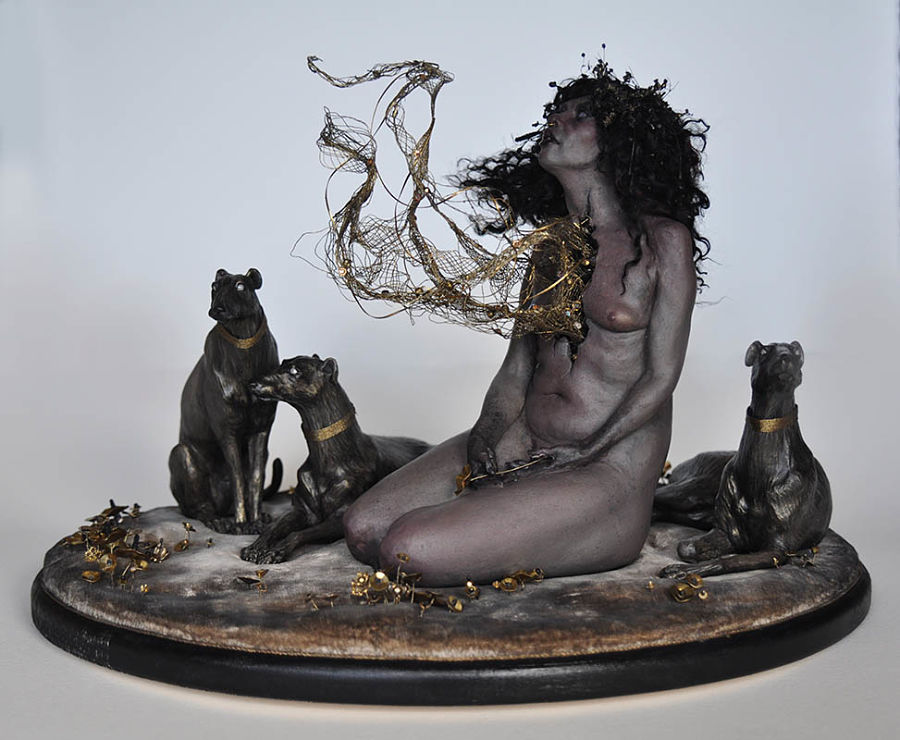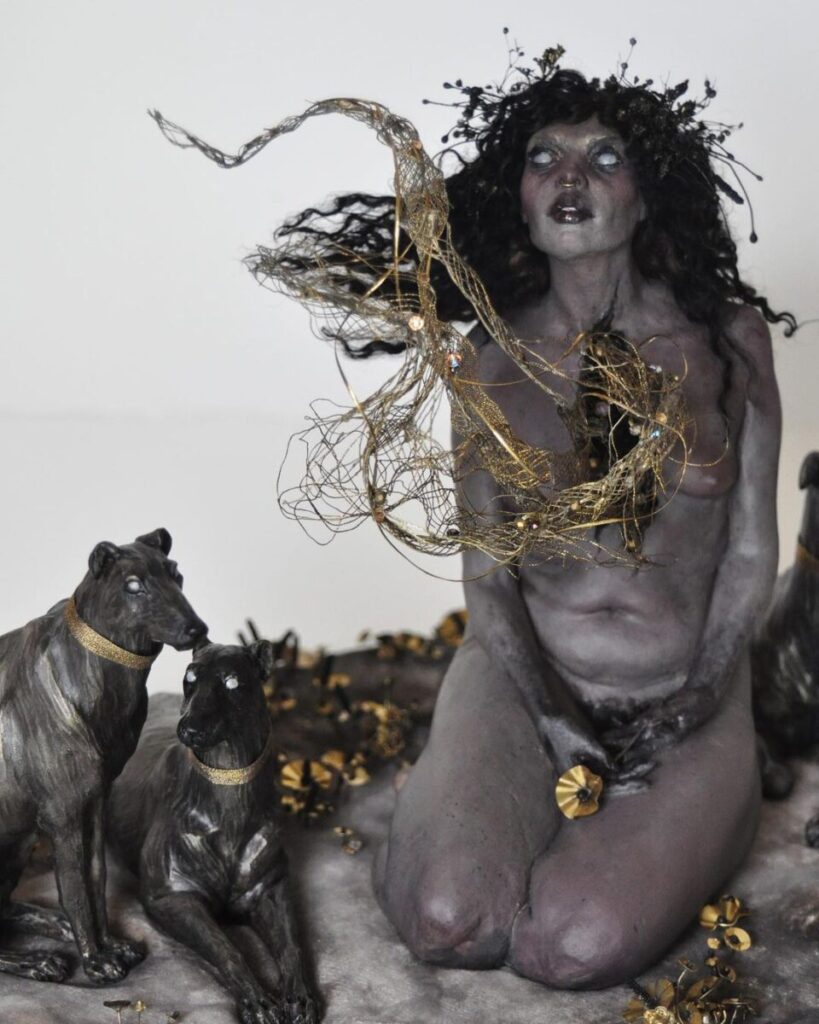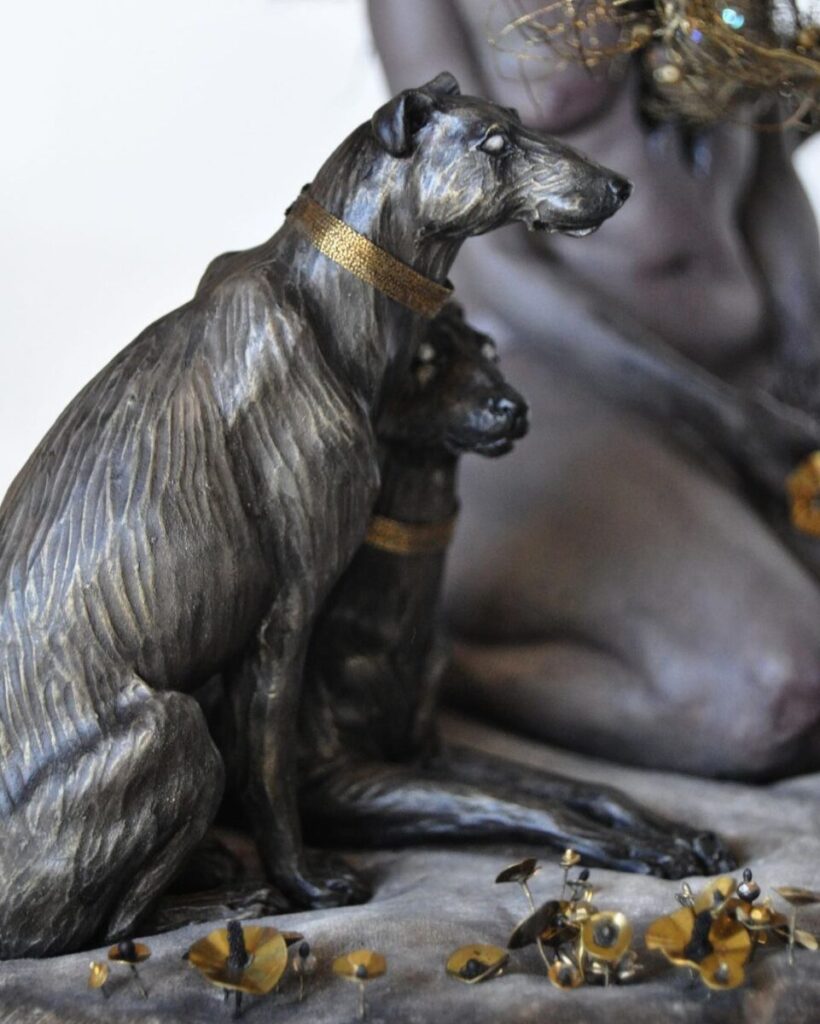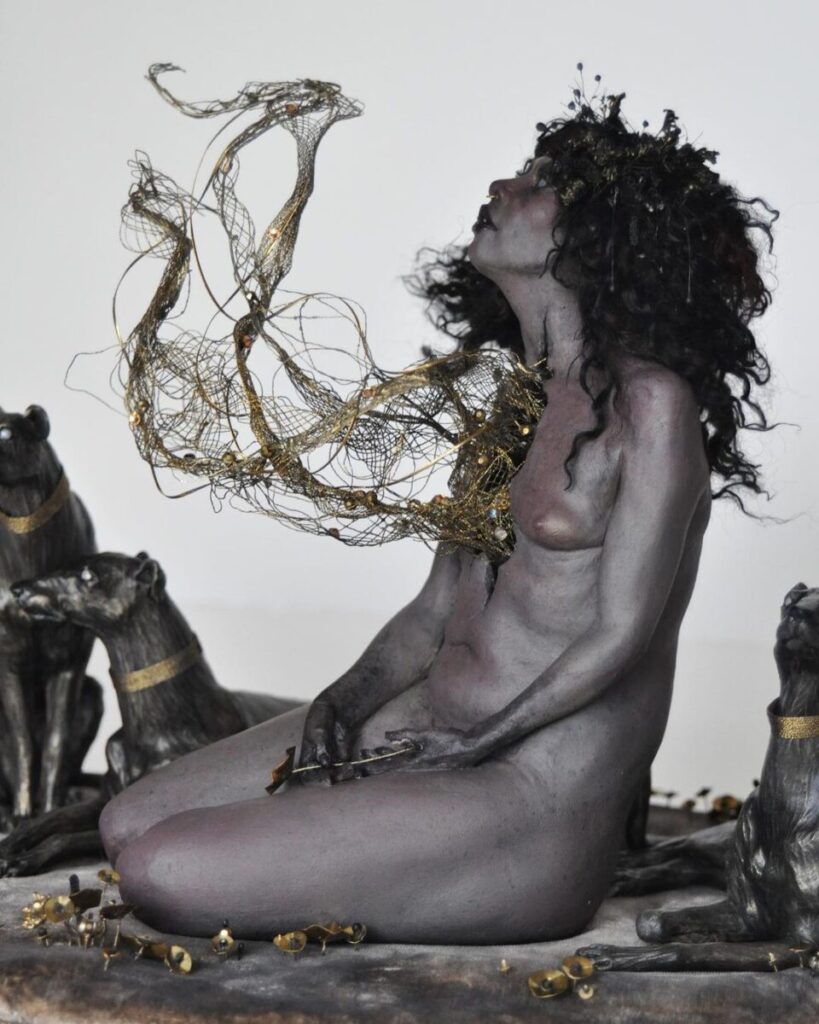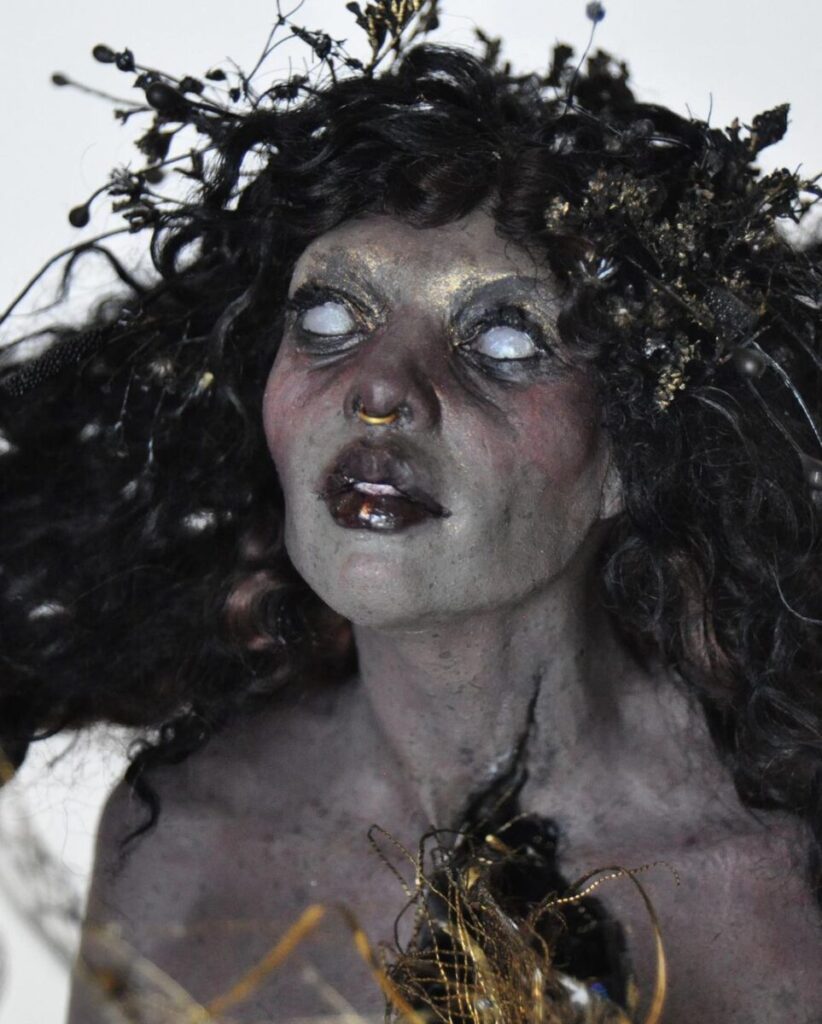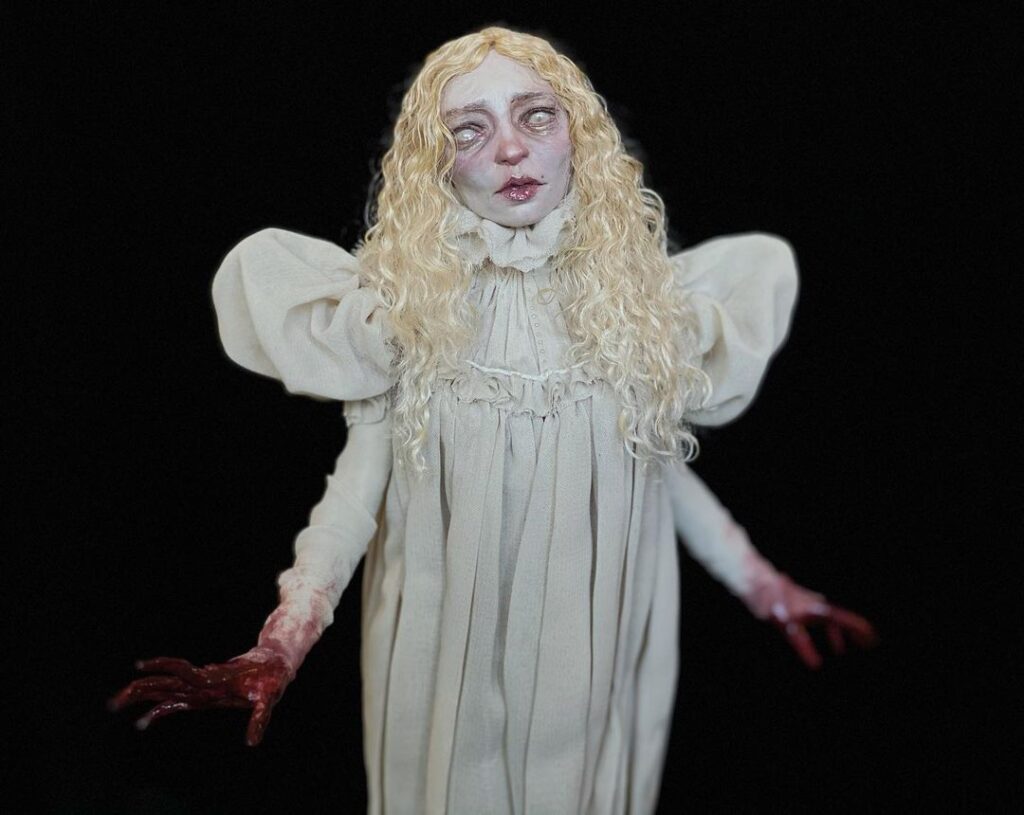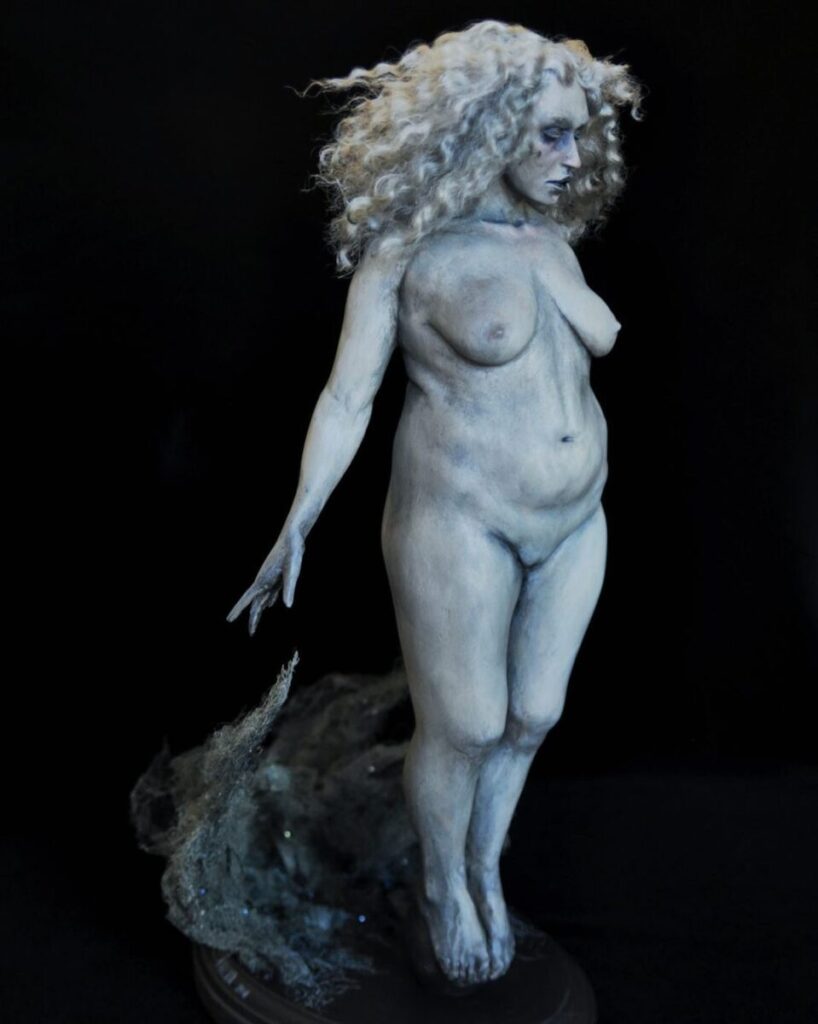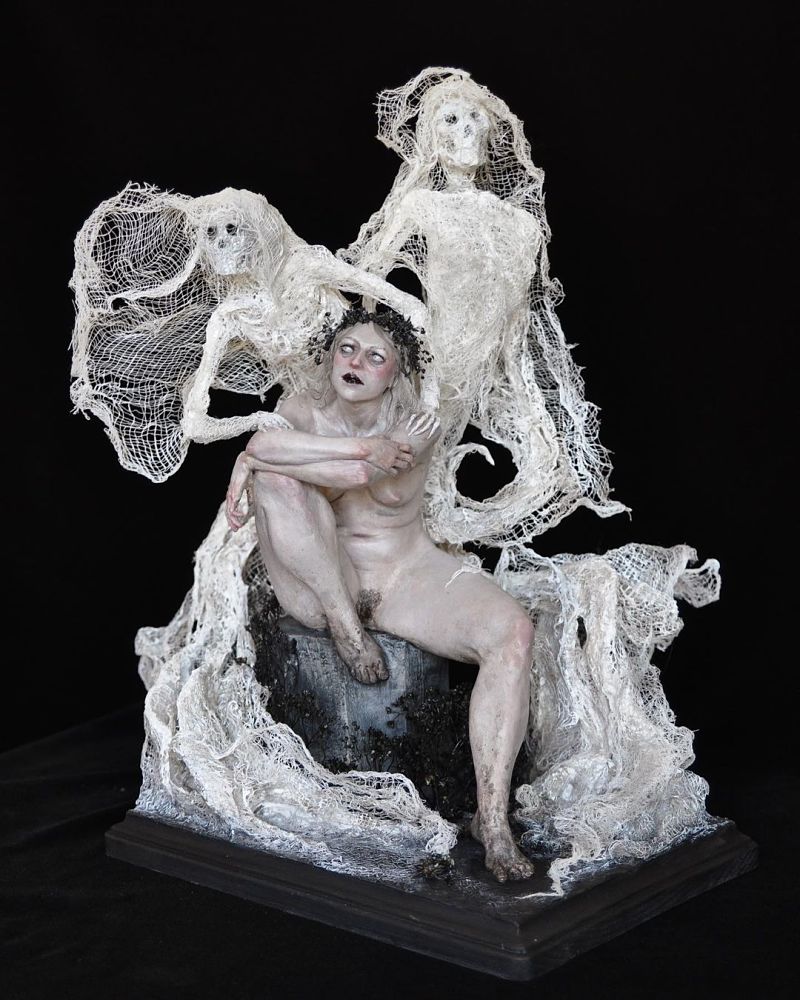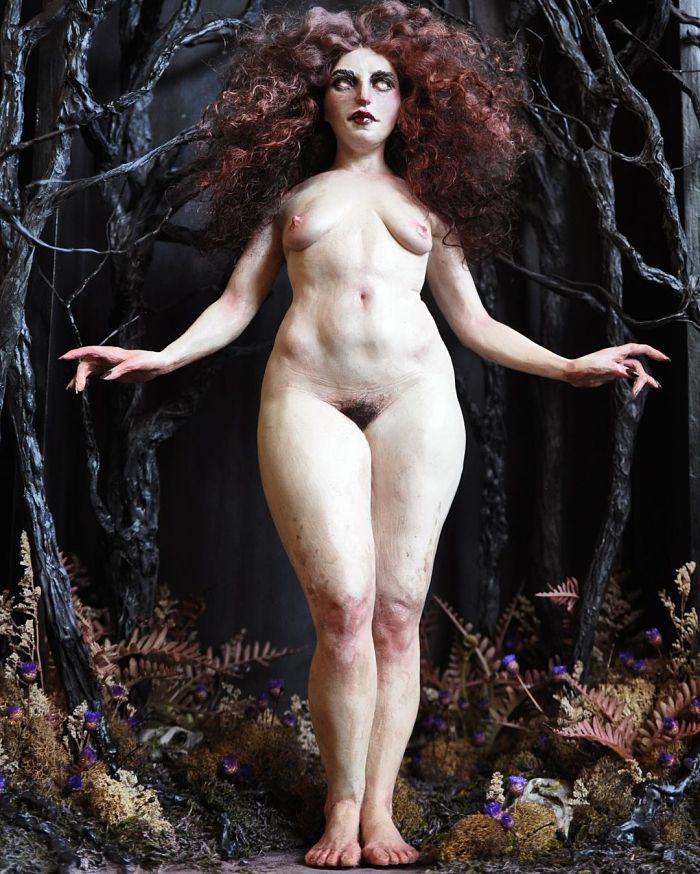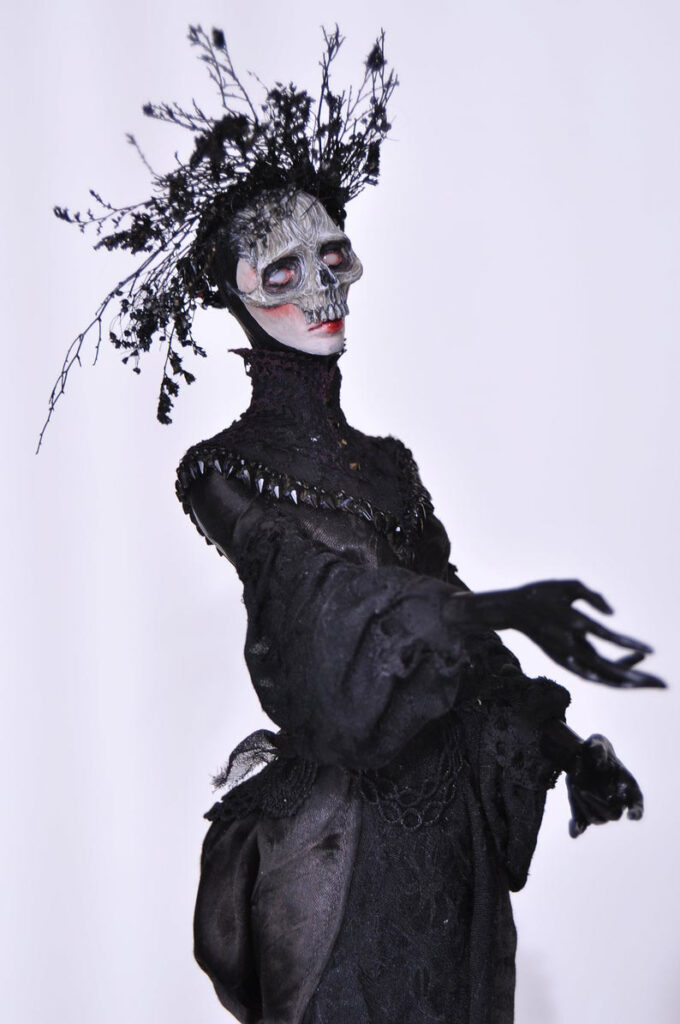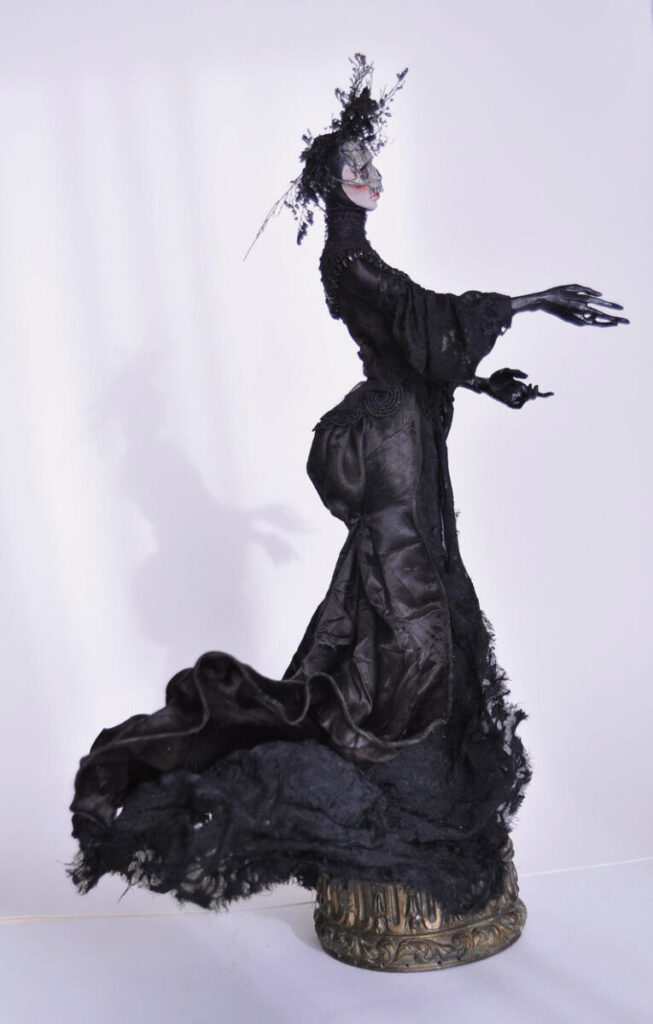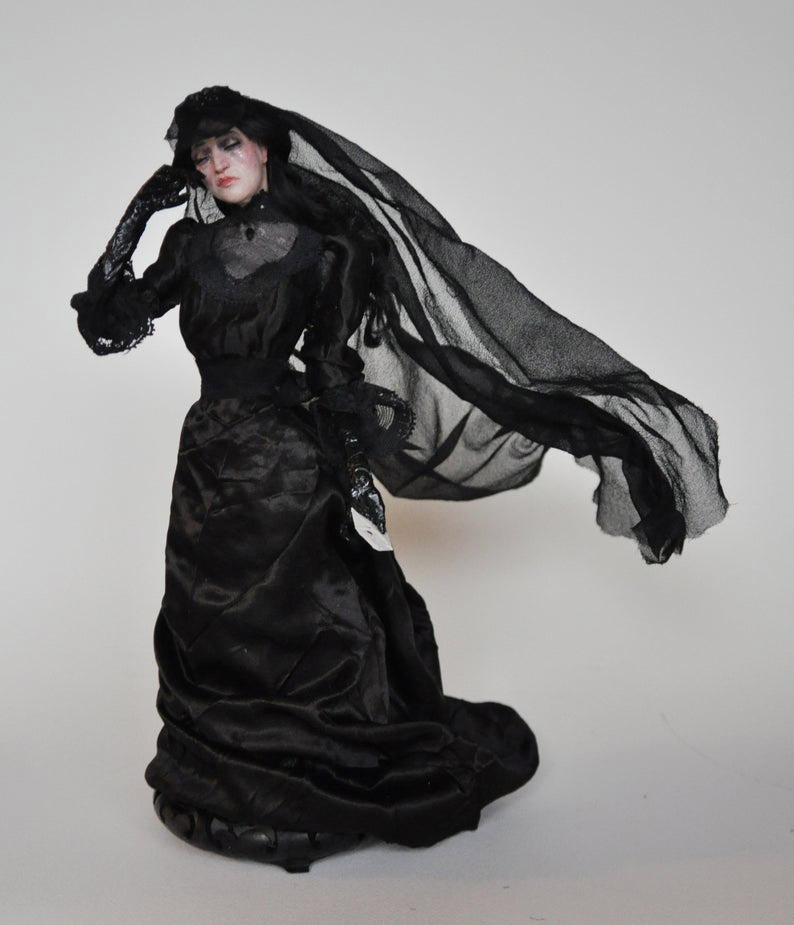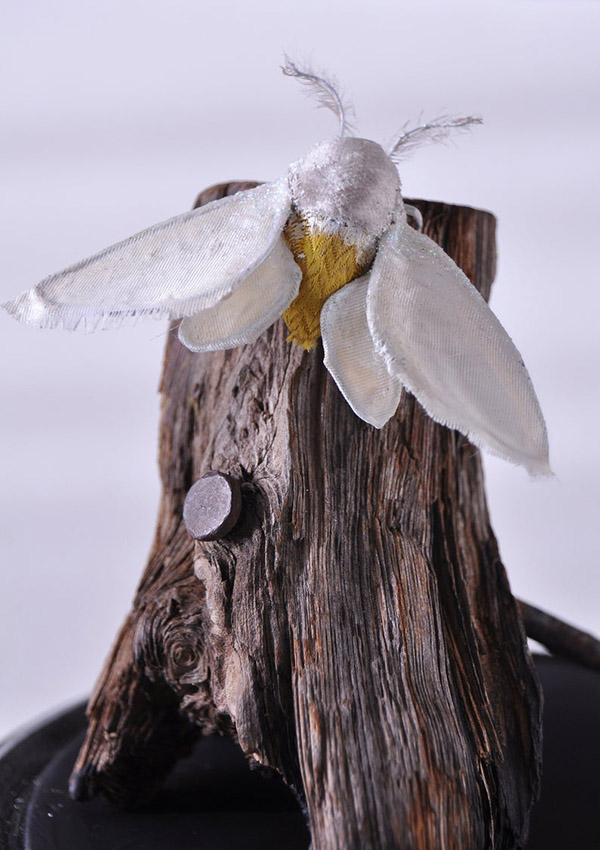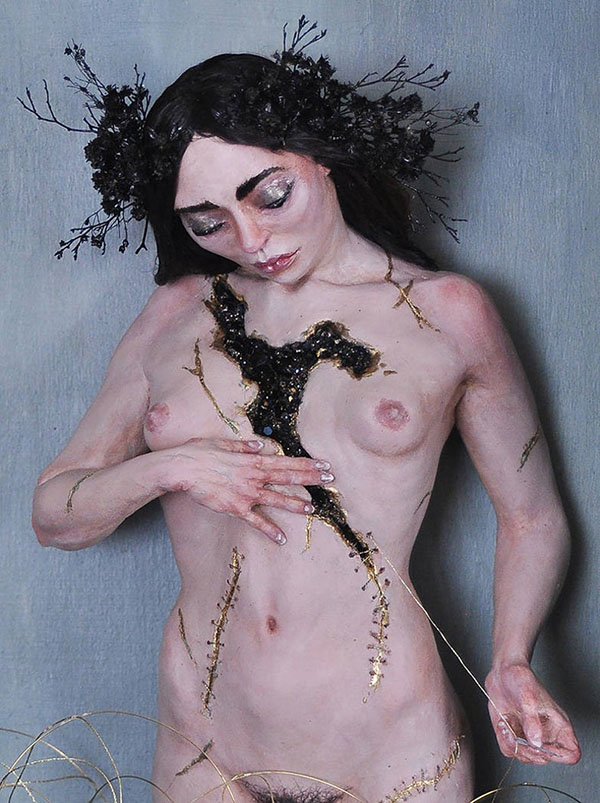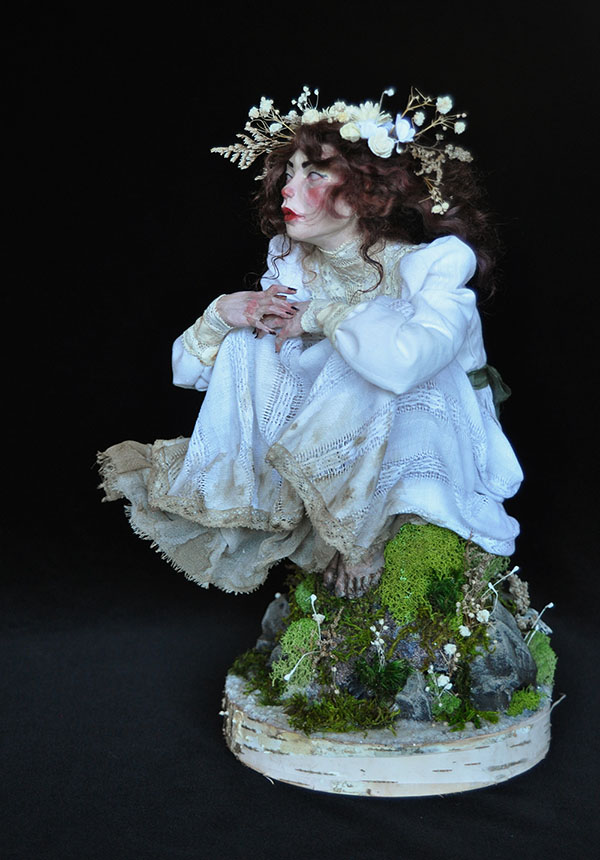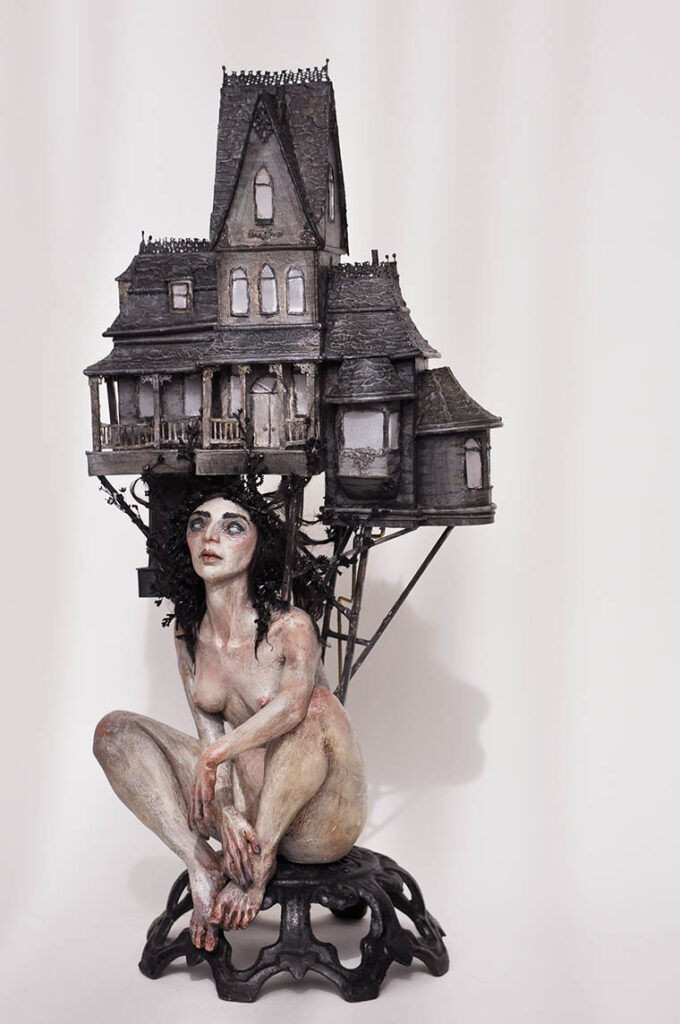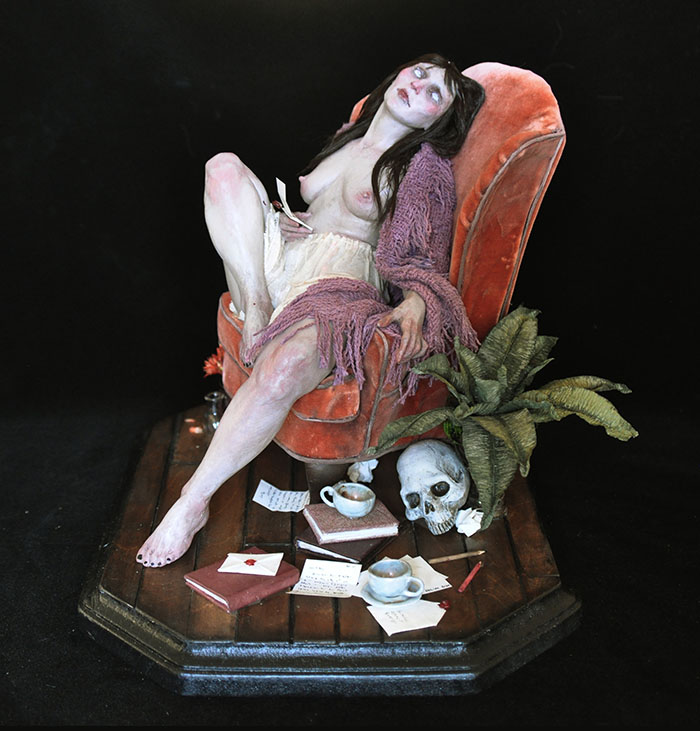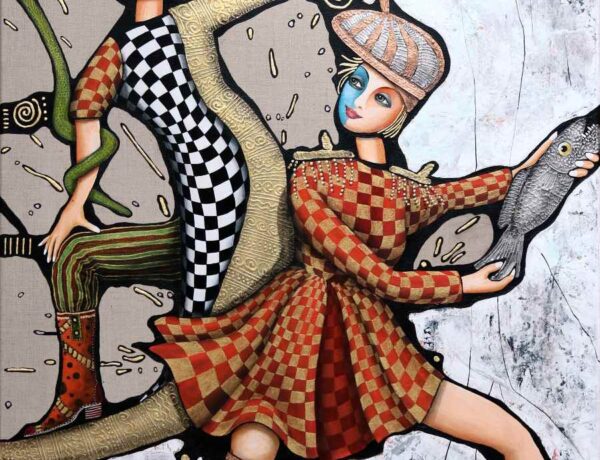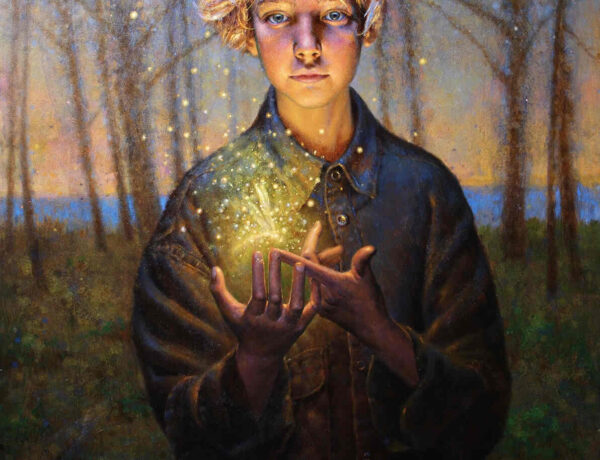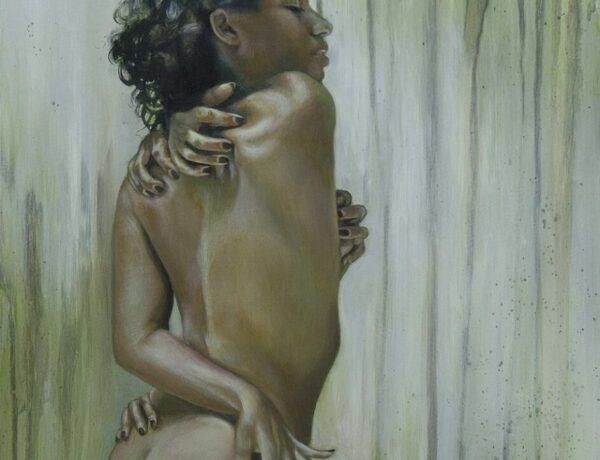Exclusive Interview with Jessica Dalva, 2nd Prize Winner, Sculpture Award, 2019 Beautiful Bizarre Art Prize
Jessica Dalva is an ever-rising star in the sculpting firmament. Not only was she 2nd Prize Winner for the Beautiful Bizarre 2019 Art Prize, but as a sculptor and illustrator, she also shared an incredible peek into her world through a TAKE OVER in December 2019. The piece that won her the Art Prize was As Dusk Would Fall, a fascinating mixed media sculpture.
Hailing from Northern California and the daughter of prolific creatives, she spent an inordinate amount of time as a child exploring the world through art – from making dolls and drawing to conjuring dirt and chalk potions. Jessica Dalva shares some insight into her upbringing, her art and how she navigates the world in this exclusive interview.
I am always collecting bits of fabric, shiny weird metal things, broken jewellery and interestingly shaped seed pods or sticks. I love taking something like a bit of old lace or part of an antique lamp and figuring out how to turn it into an architectural element or some other new thing; playing with material and scale to add texture and detail.
Exclusive Interview with Jessica Dalva
First things first, for those who don’t know you, tell us about yourself and your journey into art.
I primarily work in sculpture, but also illustrate and paint. I grew up making things, spending a lot of time in my room creating tiny worlds for dolls, drawing, making jewellery, and mixing concoctions of dirt and chalk on the porch to make ‘potions.’ My parents are both artists or makers, and we were always encouraged to be creative.
I studied illustration in school, but towards the end of college, I started leaning into three-dimensional work. I have worked a wide variety of art-related jobs where I learned techniques and practices. I did a lot of large-scale painting and sculpting when I worked to make parade floats and theme park attraction sculptures, and then later did a lot of miniature scale painting and sculpting when I built props and set pieces for stop motion animation film and television.
I have been lucky enough to be invited to exhibit my work around the world, starting right out of college. I recently have dipped my toes into the comic book world, by creating sculptural pieces that I photographed to be the covers for a new series from DC Comics, The Dollhouse Family, which was a very exciting new direction.
*First image below: ‘thinking of you’ is part of the ‘Red Light Honey’ exhibition on view at Mortal Machin Gallery.*
What is it about working in the medium of 3D that speaks to you?
I think part of my impulse to work three-dimensionally and with a variety of materials to make tiny details is my general magpie-like nature. I am always collecting bits of fabric, shiny weird metal things, broken jewellery and interestingly shaped seed pods or sticks. I love taking something like a bit of old lace or part of an antique lamp and figuring out how to turn it into an architectural element or some other new thing; playing with material and scale to add texture and detail.
I also love figure drawing and sculpting probably more than anything else. I find human (and animal) bodies to be endlessly fascinating, with an infinite array of proportions, shapes and movement. Definitely part of the reasons I use the actual materials I tend to (polymer clay, mostly) is because of ease of creation. I don’t need a foundry or huge amounts of space to build my sculptures – although I have done a few life-sized portraits in workshops recently which I would love to do more of! Increasing scale is always a challenge, but I would love to someday work much larger.
I try to use as much found, thrift or antique materials as I can to add depth and texture. A piece can take anywhere from a week to a few months, especially if it’s in a series as I will often work on several pieces at a time.
Where do you find inspiration for your concepts; which artists are inspiring you at the moment, and what is a constant source of inspiration?
I keep notebooks with me at all times, sometimes a phrase or image will strike me and I will have to write it down before it disappears. I also take notes on my phone and go back through that when I need to make something new.
Nature is always a big inspiration, as well as romantic images from the past. I have always loved the aesthetic of the turn of the century, of art nouveau and of spooky run-down places. I probably spend too much time browsing the internet and Instagram, looking at all the amazing artwork being produced in the world today.
One artist (and to pick one person to mention is so difficult) who is super inspiring to me right now is Marsha Robinson. She has some of the most incredibly detailed and intricate work I’ve ever seen, full of complex personal symbolism, amazing colour palettes, and stunning design. There are so many others out there and I’m always adding more and more favorites!
A constant source of inspiration for me are… deadlines! But more seriously (although the pressure to get a piece delivered in time is honestly a huge factor for me finding ideas), as I said before, the natural world, the weird and beautiful shapes of people’s faces and bodies, old things and found objects always influence what I make.
Take us through your process – how long does it take to complete a piece, and what are the steps along the way?
It depends greatly on the piece. If I am working on a series of pieces for a bigger show, I like to have an overall concept that ties them together – sometimes that is a phrase or sometimes it’s more of a physical attribute, like ‘I want all the pieces to have a solid background with these shaped frames.’
If it’s something that is part of a group exhibition where I’m only making one piece, I will brainstorm in a sketchbook based off of the theme of the show, writing down elements I want to include as well as small sketches, usually super loose shapes and poses. The conceptual stage takes a lot longer when working on a series, as I want to be sure all the pieces will be cohesive and have a story to tell together.
I usually gather the bases or shadowboxes before starting work so I can get the scale right. I build armatures with wire and aluminum foil, and usually a base sculpt with epoxy clay for strength. Then I start adding detail with polymer clay, cure the clay in a convection oven, paint the figure, add hair and costuming, and build the background elements with a variety of different materials. I try to use as much found, thrift or antique materials as I can to add depth and texture. A piece can take anywhere from a week to a few months, especially if it’s in a series as I will often work on several pieces at a time.
As a person who generally feels kind of unsure and nervous relating to other people, translating my thoughts and feelings into art that someone else can say, “Oh I feel that way too”, makes me feel less alone in a rapidly crumbling world.
What are some of your favourite materials or tools to use and why?
As I mentioned above, I love using found materials, vintage fabrics, threads, beads, etc., and natural materials. I’ve lately been on a big floral kick, using a lot of vintage haberdashery materials like tiny faux flower stamens, miniature paper flowers and lichen. For sculpting, I mostly use metal dental sculpting tools. I am also a fan of Kemper tools for wire or ribbon modelling tools, and Valdez wire tools – they are strong and sooo tiny! Probably the most used tool I have is a good old Xacto knife.
What are your thoughts on being an artist in today’s digitally driven world? Is it easier or harder making a name for yourself and growing your audience? What are the challenges and how do you navigate these issues?
This is something I struggle with very often – how much time and effort to spend trying to grow an audience when ultimately those efforts take away from my time spent actually making art. I would like to say I don’t care or that doesn’t affect how I work, but I do and it does – I want to make things that people will enjoy, but also I have to find ways to also enjoy what I make, and that’s a difficult line to walk.
Because of the recent (I guess not that recent anymore) changes to how Instagram works, it’s not really something I enjoy using, as it is completely reliant on algorithms, timing and all kinds of unknown-to-me factors whether your work gets seen by your audience or not. The changes Instagram made hugely impacted so many artists and small businesses, I have seen a dramatic drop in engagement and it makes it super discouraging to try to fix that. Honestly, I don’t have a good answer on how to navigate it, and I wish I did!
How do you balance work and home life? Does the concept of ‘balance’ really even exist for an artist?
It depends on what I’m doing at the moment – if you ask me as I’m sitting in my living room, covered in packaging foam scraps at 3 am, trying to get my work safely ready for shipping to reach a deadline; if I have a good work/home life, the answer would very much be ‘no!’ But right now I feel relatively well balanced, I work part-time at a retail shop, to bring in a little consistent income, and work the rest of the week on my personal stuff.
It definitely gets very overwhelming at times, and I have never really felt like my time-management skills are that great. I don’t get out a lot when I’m working on a show, and the realities of how much time and money I spend to be an artist are extremely discouraging a great part of the time. But, to balance that, I have had a lot of really wonderful experiences because of the art I have made, from being able to travel to shows, winning awards and, the best part to me… having people tell me how much the things I’ve made meant to them. As a person who generally feels kind of unsure and nervous relating to other people, translating my thoughts and feelings into art that someone else can say, “Oh I feel that way too”, makes me feel less alone in a rapidly crumbling world.
Where do you see yourself in future? What excites you that you’re keen to experiment with?
Well, hopefully, we’ll be existing in less of a generally collapsing world in 5-10 years, but maybe I’ll have adapted my creative abilities and will be hiding in the last remaining patches of forest, foraging for materials to make a water filtration system.
But, more optimistically, I would like to be continuing to make art, perhaps teaching at some point. I would also love to work larger, make something that would last forever. Or, you know, until 2034 when the world implodes because of human stupidity! (I have never been very optimistic about the future, or able to make big plans!)
Make everything the best you can do, but be okay with it not being perfect. Keep practicing.
Why did you enter the Beautiful Bizarre Magazine Art Prize?
Mostly as a “well, why not!” – I have entered a lot of contests and juried shows without any response, and that’s usually my attitude. It doesn’t hurt to try.
What do you feel you have gained from this experience?
It was super exciting to be on such a list of artists, and to get second place was kind of mind-boggling, honestly! It is really helpful to me to have reminders like the certificate to look at when I’m feeling discouraged. Imposter syndrome is very real, and I value the ability to reassure myself that I’m doing work worth doing.
Would you recommend it and encourage others to enter? If so, why?
Yes! I think, as far as art competitions go, there was a huge variety of entrants and winners, and the exposure is great. Exposure is not enough to live on, but it’s very helpful and encouraging. It doesn’t hurt to try!
What advice would you give to artists keen to follow in your footsteps?
That’s always so hard to answer, as I don’t feel like I have much figured out. Keep practicing, don’t compare yourself to other people (except to say, “oh I can do better too!”). Keep practicing, don’t get stuck on one thing, don’t ever try to pass something off as your own that you copied; copying things for practice is totally okay and smart to do, but don’t try to sell it or say it was your original idea. Never stop learning new things, don’t think you know everything right away. Keep practicing. Take life drawing classes, or just draw people in coffee shops, draw your friends. Sleep when you can. Get a pet. Take a walk. Read books, look at art in museums. Don’t be discouraged because someone is ‘better’ than you – there are always going to be those people, that doesn’t mean you aren’t good too. Listen to criticism and don’t get defensive. Keep practicing. Make bad stuff, make something else, the next thing will be better. Make everything the best you can do, but be okay with it not being perfect. Keep practicing.
*Jessica will be part of the Arch Enemy Arts 9th Anniversary Show in April and will have as a small feature show at the gallery in May (date TBA).*


